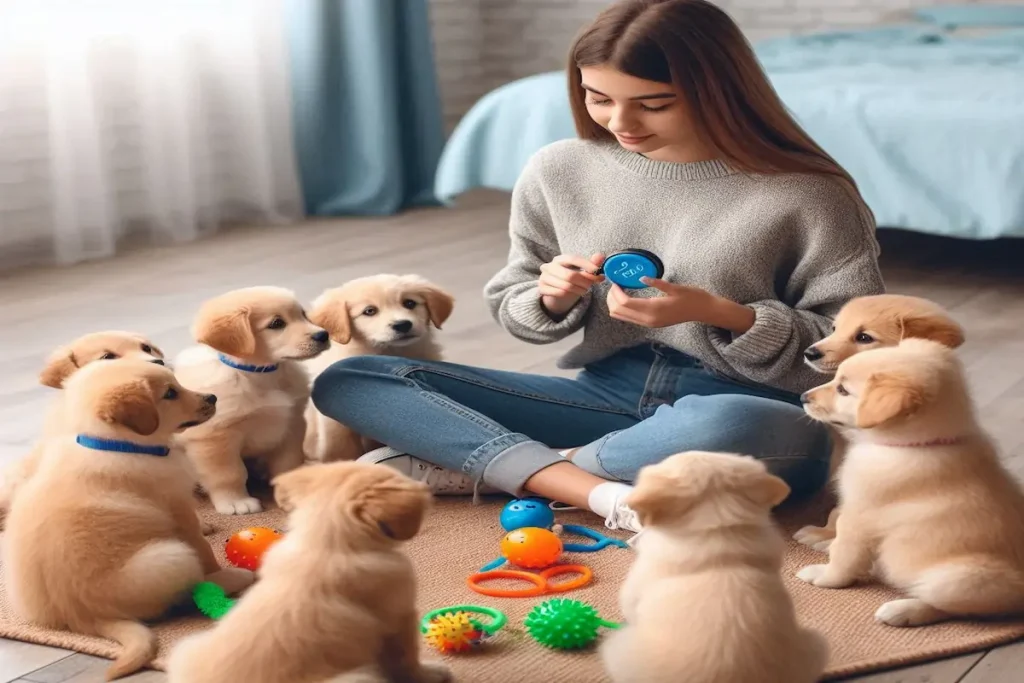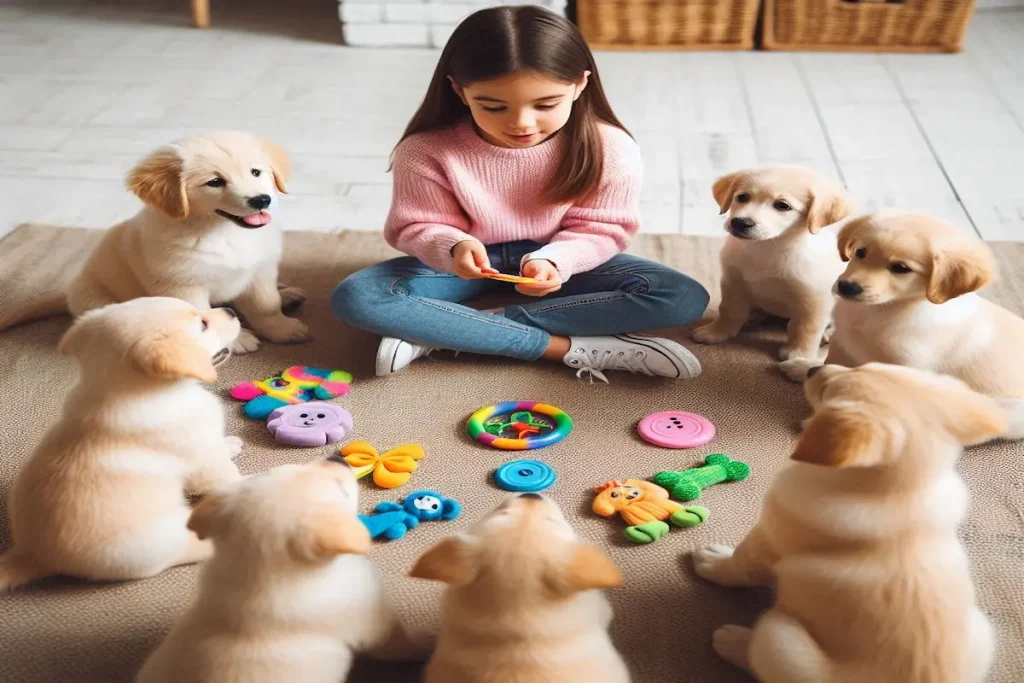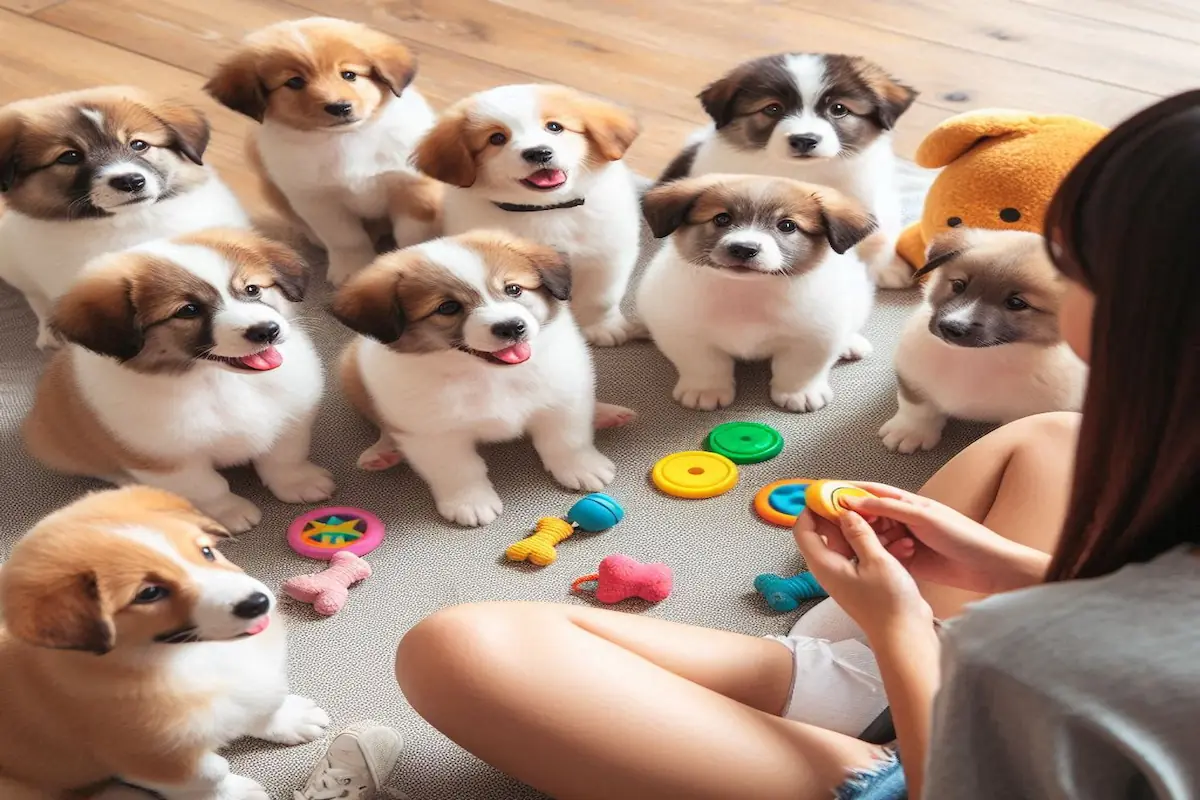Puppy Training Guide
Introduction
Getting a new puppy is exciting, isn’t it? You’ve got this bundle of energy that’s full of potential, but let’s face it, they also come with their own set of challenges. From chewing on your favorite shoes to ignoring your calls, puppies need a lot of guidance. This is where puppy training comes in! Early training is critical to shaping your pup into the well-behaved dog you dream of. In this comprehensive guide, we’ll cover everything you need to know to get your puppy off to the best start.
The Importance of Early Puppy Training

Did you know that the most crucial period of a dog’s life is their first few months? This is when they are most receptive to learning and adapting to their environment. Early training sets the stage for a lifetime of good behavior and helps avoid future issues. Plus, it helps strengthen the bond between you and your puppy, establishing you as the leader they trust and follow.
Related: How to Train Your Dog: Essential Tips for Pet Owners
Understanding Your Puppy’s Behavior
Puppies are curious, playful, and yes, sometimes downright mischievous! But that’s all part of their learning process. Understanding your puppy’s natural behaviors, such as exploring with their mouth, excessive energy, and their need for socialization, helps you tailor your training methods. Puppies are like little sponges—they soak up everything around them, and your job is to guide them in the right direction.
Choosing the Right Training Approach
With so many training methods out there, it can feel overwhelming to choose the right one. The good news is that most modern trainers agree on the effectiveness of positive reinforcement. This approach involves rewarding your puppy for good behavior, whether through treats, toys, or praise, rather than punishing them for bad behavior. It’s all about building a positive association with the behaviors you want to see more of.
Socialization: The Foundation of Training

One of the first things you’ll need to focus on is socializing your puppy. Proper socialization involves exposing your puppy to different people, animals, sounds, and environments. This is crucial between the ages of 8 to 16 weeks, a sensitive period when puppies learn what is safe and what’s not. Socialization helps prevent future fears, anxiety, or aggression.
Some tips for socialization:
- Arrange playdates with other friendly dogs.
- Take your puppy to new places like parks, pet-friendly stores, and vet offices.
- Introduce your puppy to people of all ages, from children to seniors.
Housebreaking and Potty Training
Housebreaking is probably one of the first training challenges you’ll face. The key here is consistency and patience. Puppies thrive on routine, so set a regular schedule for potty breaks—after meals, naps, and playtime are ideal moments.
Here’s a step-by-step potty training process:
- Create a designated potty area: Take your puppy to the same spot every time.
- Praise and reward immediately: As soon as your puppy does their business in the right spot, praise them and give them a treat.
- Avoid punishment: If accidents happen (and they will), don’t punish your puppy. Clean up the mess and stay consistent with the training.
Basic Commands: Sit, Stay, and Come
Teaching your puppy basic commands not only makes them more obedient but also helps keep them safe. Start with simple commands like “sit,” “stay,” and “come.” Use positive reinforcement to reward your puppy when they respond correctly.
- Sit: Hold a treat above your puppy’s head and move it back slightly. As their nose follows the treat, their bottom will naturally lower to the ground. Once they’re sitting, say “sit” and reward them.
- Stay: Once your puppy knows how to sit, teach them to stay by holding your hand up like a stop sign and saying “Stay.” Gradually increase the duration before giving the treat.
- Come: Call your puppy’s name followed by “come.” When they come to you, praise and reward them.
Leash Training: Walking Calmly and Without Pulling
Leash training can be tricky at first, especially if your puppy is easily distracted by the great outdoors. The goal is to teach them to walk calmly beside you without pulling or darting off in every direction. Start by letting your puppy wear its leash indoors to get used to the feel. Once outside, reward them for walking next to you with slack on the leash.
Related: Advanced Dog Training Exercises: Elevate Your Pup’s Skills
Crate Training: Creating a Safe Space
A crate is not a punishment—think of it as your puppy’s safe space, like a cozy den. Crate training helps with housebreaking and gives your puppy a place to rest when they’re overstimulated. Introduce the crate slowly by placing treats and toys inside, and make it a positive experience.
Handling and Grooming Training
Your puppy needs to get used to being touched, especially for things like vet visits or grooming. Make handling a regular part of their routine by gently touching their paws, ears, and mouth while giving them treats. This helps them feel more comfortable when it comes time for nail trims or teeth brushing.
Preventing Problem Behaviors Early On
Puppies are natural chewers, jumpers, and biters—it’s all part of how they explore the world. The trick is to redirect these behaviors before they become problematic. Provide plenty of chew toys and discourage nipping by redirecting your puppy’s mouth to a toy or by giving a firm “no” when they nip.
Teaching Your Puppy to Be Alone
Separation anxiety can develop if your puppy becomes too reliant on your constant presence. To prevent this, gradually get your puppy used to being alone by leaving them for short periods and slowly increasing the time. Use a crate or a puppy-safe area when you leave, so they don’t feel overwhelmed.
Advanced Puppy Training: Tricks and Challenges
Once your puppy has mastered the basics, you can introduce advanced training like tricks or agility exercises. Teaching your puppy to fetch, roll over, or high-five keeps them mentally stimulated and strengthens the bond between you.
Training a Puppy to Interact with Other Pets
If you have other pets at home, you’ll need to ensure your puppy knows how to interact with them. Introduce them slowly, allowing both animals to get used to each other’s scent and presence before letting them interact freely. Supervised play and positive reinforcement will help create harmony.
Related: Essential Dog Training Words Every Owner Should Know
Importance of Consistency and Patience
Training a puppy requires consistency and patience—there’s no getting around it! Repetition is key, and everyone in the household should be on the same page when it comes to training commands and expectations.
Puppy Classes and Professional Training
If you’re feeling overwhelmed or your puppy isn’t responding to home training, consider enrolling in a puppy class. These classes are a great way to socialize your puppy and learn new training techniques from professionals.
Reward Systems: How to Use Treats Effectively
Treats are an excellent way to motivate your puppy, but they should be used wisely. Make sure treats are small, healthy, and given immediately after good behavior. As your puppy improves, gradually reduce the number of treats and replace them with praise or toys.
Understanding Milestones in Puppy Development
Puppies grow fast, and their training needs will change as they develop. Understanding your puppy’s developmental stages, from teething to adolescence, can help you adjust your training techniques and expectations.
Common Mistakes to Avoid in Puppy Training
Avoid these common mistakes when training your puppy:
- Inconsistency: If you’re inconsistent with commands, your puppy will get confused.
- Punishing mistakes: Positive reinforcement is more effective than punishment.
- Not being patient: Every puppy learns at their own pace.
Conclusion
Training your puppy is a rewarding journey that lays the foundation for a lifetime of good behavior and companionship. With patience, consistency, and love, you’ll help your puppy grow into a well-mannered, happy dog.
FAQs
Q1: How long does it take to train a puppy?
A: Training is an ongoing process, but most puppies pick up basic commands within a few weeks of consistent practice.
Q2: What age should I start training my puppy?
A: You can start training as early as 8 weeks old. Early training helps shape good behavior from the start.
Q3: How do I stop my puppy from biting?
A: Redirect your puppy’s biting to a chew toy and use a firm “no” to discourage nipping.
Q4: How many times a day should I train my puppy?
A: Short, frequent sessions work best. Aim for 5-10 minute sessions a few times a day to keep your puppy engaged.
Q5: Can I train my puppy without treats?
A: Yes! While treats are helpful, you can also use praise, toys, and affection to reward your puppy’s good behavior.

